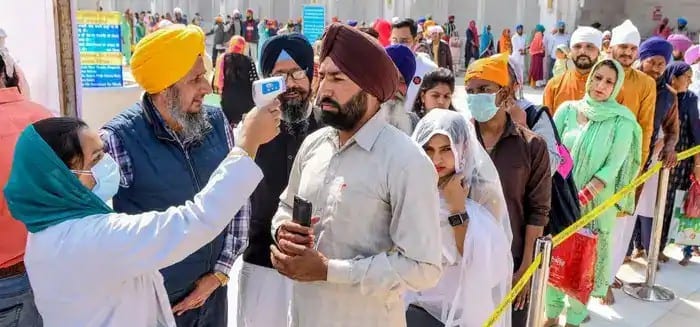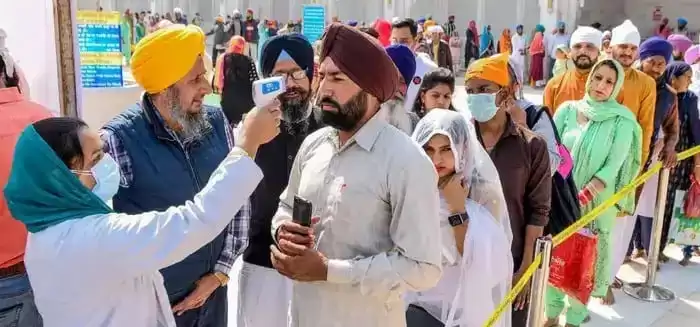

Last updated on September 11th, 2021 at 02:38 pm
India crossed 1 million coronavirus cases on Friday, third only to the United States and Brazil, prompting concerns about its readiness to confront an inevitable surge that could overwhelm hospitals and test the country’s feeble health care system.
A surge of 34.956 new cases in the past 24 hours took the national total to 1,003,832.
The Health Ministry also reported a record number of 687 deaths for a total of 25,602. It said 635,757 people have recovered and the recovery rate was continuing to improve at 63%.
The grim milestone comes at a time when several Indian states are imposing focused lockdowns to stem the outbreak amid frantic efforts by local governments to protect the economy.
So far, three states — Maharashtra, Delhi and Tamil Nadu — have accounted for more than half of total cases. But in India’s vast countryside, which is much less prepared and with weaker health care, the pandemic is clearly growing.
“The acceleration in cases remains the main challenge for India in the coming days,” said Dr. Ashish Jha, director of the Harvard Global Health Institute, adding that a vast majority of cases were still being missed.
The continuing surge has forced authorities to reinstate lockdowns in some cities and states.
In Bangalore, a city that prides itself as the center of of Indian technology innovation, the government ordered a weeklong lockdown that began Tuesday evening after the cases surged exponentially.
In Bihar, an eastern state with a population of 128 million and a fragile health system, a two-week lockdown was announced Thursday.
In Uttar Pradesh, the most populous state with more than 200 million people, authorities have started placing residents under strict weekend curfews, which will remain in place until the end of the month.
Other local governments are increasingly focusing on smaller lockdowns that shield the economy. Nearly a dozen states have imposed restrictions on “containment zones” — areas that can be as small as a few houses or a street.
Initially, India had some of the world’s most stringent testing criteria and used only about a third of its testing capacity. After months of sluggishness, it has now ramped up testing, from a single lab in January to over 1,200. Over 300,000 samples are being tested every day.
In some cities, it has also allowed tests without a doctor’s prescription. “The battle plan is to do all the things we know work. Open the economy, as much as it is safe. Track things very closely,” said Jha. “But don’t let the virus get a foothold.”
(BusinessInsider)
Creative Africa Nexus (CANEX) is running the Book Factory Prize for Publishing in Africa again to award $28,000 to African…
Canadian companies have expanded their presence as major African mining stakeholders and invested more than $37 billion. Africa holds the…
The South African government wants people to plant one million trees across the nation within a single day on September…
The government's statistics regulator showed that South African inflation stayed at 3.2% during February and rose below the projected 3.3%.…
Keywords: Cape Town, African Energy Chamber, Africa, The 2025 African Energy Week (AEW) will host the top energy leaders from…
Recent research shows that Professor Abdessamad Faik believes Africa is at an important energy choice point as renewable-powered hydrogen allows…
This website uses cookies.